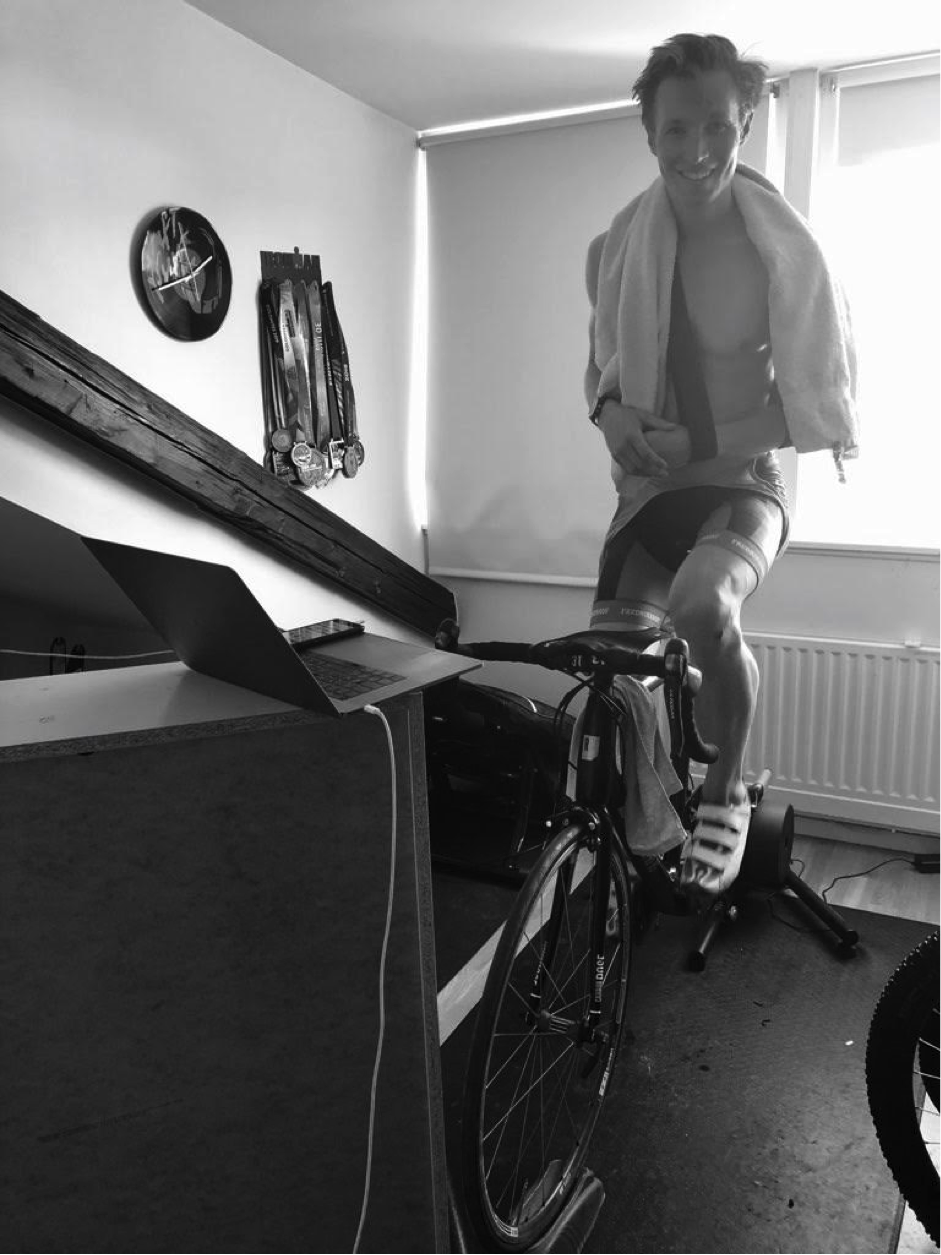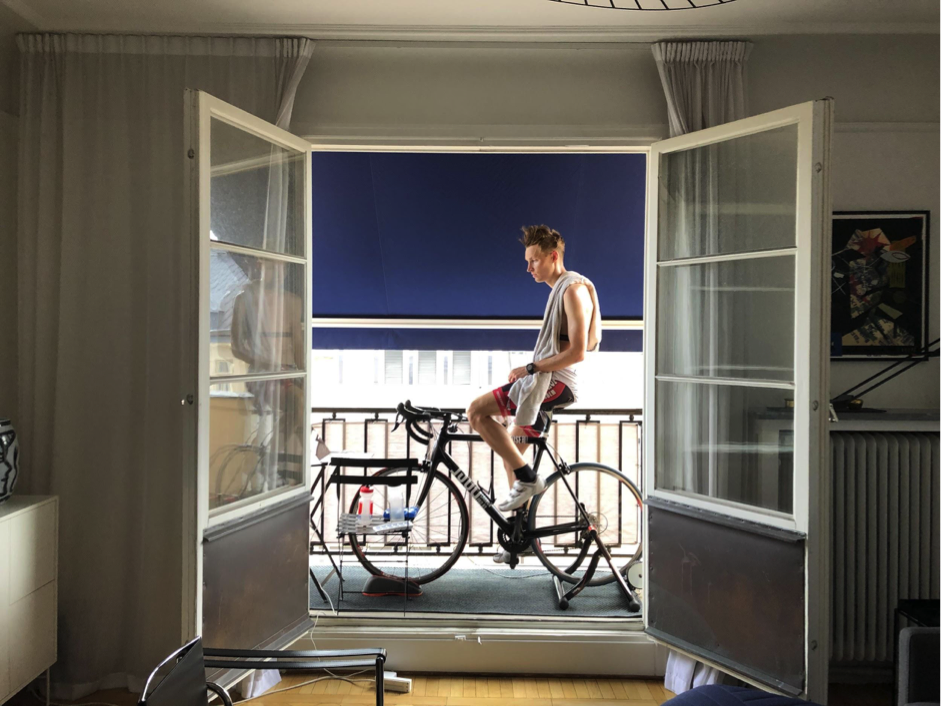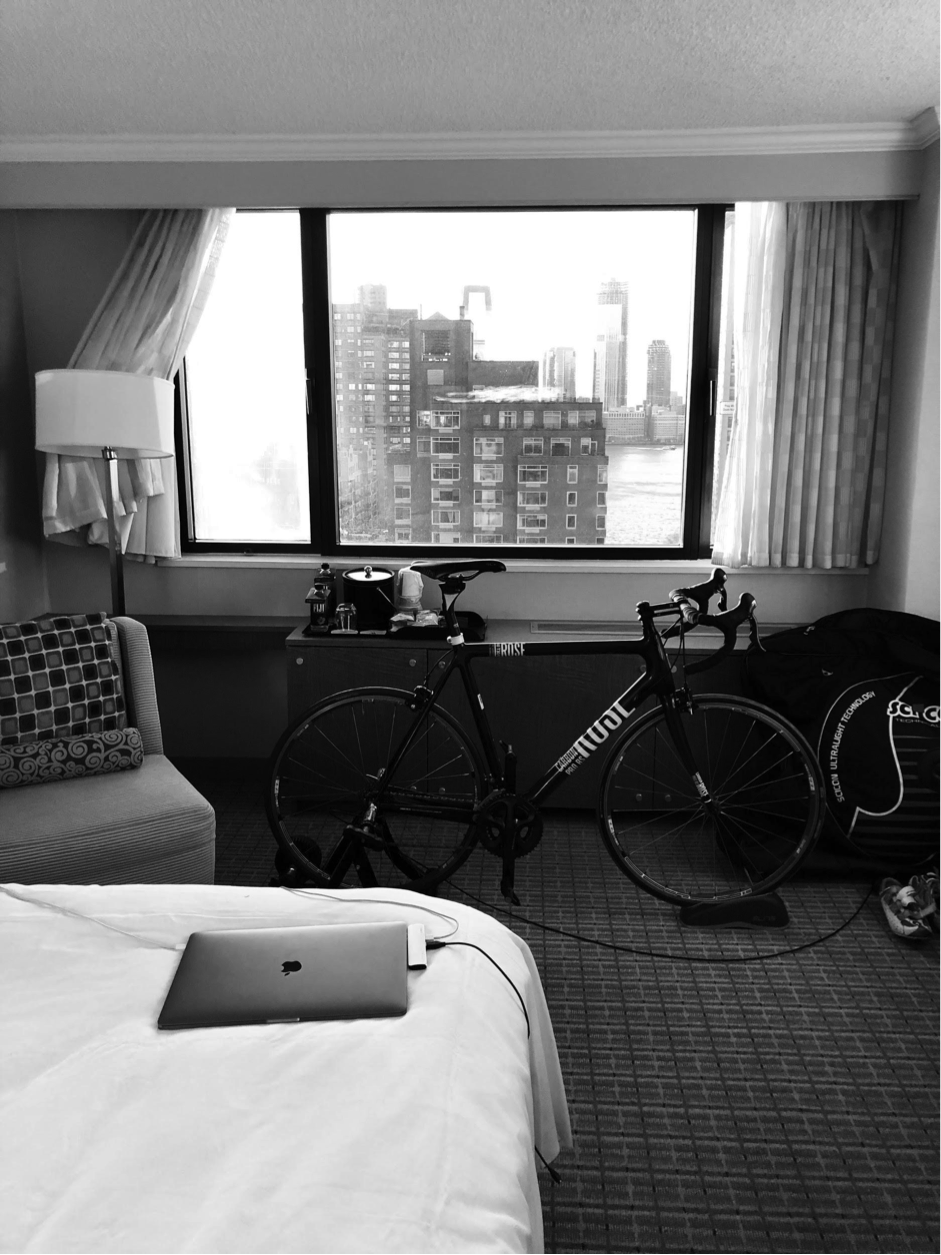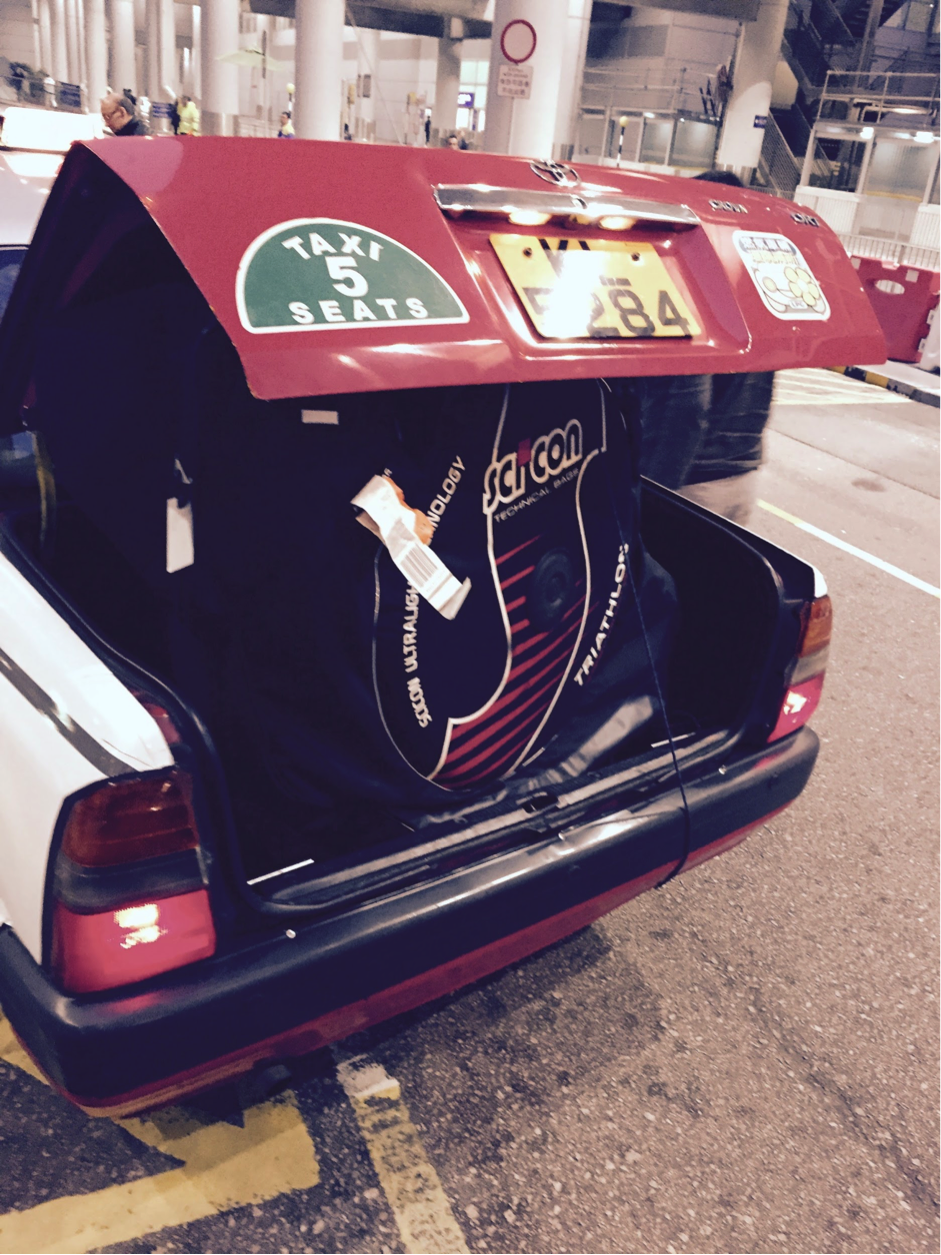04/10/2019
Haute Route Ambassador Simon Boqvist: From Busted Collarbone to Mont Ventoux
Simon Boqvist is an Haute Route Ambassador from Sweden. Out on a training ride a crash left him with a broken collarbone. Not to be deterred from his goal of completing Haute Route Ventoux, he found a way to keep on track. Read on to learn about how Simon will tackle Haute Route Ventoux and make it up one of cycling’s most iconic climbs this October.
Hello Simon, Thanks for joining us. Let’s begin with something simple. How long have you been cycling and what made you decide to do an Haute Route?
I started with road cycling about 7 years ago now, but at that time in relatively small scale at various endurance events in Sweden while also doing other endurance sports such as running, swimming and cross country skiing. The last couple of years I’ve started to up my game though as my interest is ever increasing and now I’d consider myself to be a rather serious amateur.
As for doing an Haute Route event, it was actually something that had been on my radar for a number of years. A couple of reasons intrigued me specifically with Haute Route. First off, the cycling experience itself featuring many iconic climbs through Europe and the world was somewhat of a starting point for my interest. Secondly, I also wanted to try out a multi day event, a stage race. Having been in to competing in endurance sports for a while, it felt like a natural next step of exploration in terms of learning more about my physical (and mental) abilities. Finally, the professionalism around the organization and the event that the Haute Route provides, with on course Mavic support and all other benefits making it feel close to a pro-event in a sense, was something I found really appealing too.
Your training got derailed and you’ve had to make adjustments. Tell us what happened and about your “new normal”.
Yeah, so since the crash when I broke my left collarbone I’ve had to ride almost exclusively on the trainer, which definitely has become somewhat of a “new normal” for training for me. Now when I’ve got the speed up in this type of training, I don’t mind it at all actually. There are many benefits with riding on the trainer and many ways of making it more enjoyable. That said though, I of course look forward to being able to ride without any limitations outside again.
The crash happened on a regular training ride where I was a bit unlucky I guess; getting a puncture (explosive) just as I exited a corner in somewhat high speed (40-45 km/h), which made me wobble, lose control and go down on the tarmac with the shoulder first into the ground. Painful for sure, but recovery has so far been smooth. I need to undergo surgery however (not having done so yet when writing this), so fingers crossed that by the time you’re reading this I’m in much better shape!
Some people dread long trainer sessions as it can be somewhat monotonous compared to riding outside. How do you manage that?
Well, there are a number of things you can do to make your trainer ride more enjoyable and/or make it feel like time is passing faster. Besides the obvious things like watching or listening to something while you’re on the trainer, I’d like to share three things below:
1) Add structure: Somewhat basic, but adding some structure to your sessions will create an automatic segmentation and focus for you (“let’s just get through this next interval and then see what happens”-kinda thinking). This definitely makes it feel like time is passing faster. This also provides benefits in terms of workout session adherence, such as holding certain power output consistently when doing your interval sessions. That’s actually great for simulating a longer climb. If you live in a city like Stockholm in a country similar to Sweden, where we simply don’t have access to any Alpe-like climbs, I would guess a properly structured trainer session would be far more accurate in simulating a long hill climb compared to riding outside and trying to hunt down whatever (probably small) hills you can find in your local proximity.
2) Practice mindfulness: This one is perhaps somewhat unexpected, but it could actually be highly beneficial. With the consistent distractions you get from all the impressions from the things around you when riding outside, you undoubtedly tend to “feel the pain” a bit more when riding on the trainer. This does not have to be all that bad however. I think that if you really want to push yourself, you cannot shy away from the pain and suffering, you need to find a way of getting familiar with it in order to endure it. Mindfulness on and off the trainer can be super beneficial in achieving this.
3) Try Zwift: I’ve recently started ‘zwifting’ myself and now got completely (and unexpectedly hooked). Give it a try, it’s really good fun! - both for training and racing. It also provides a social aspect which is something completely new due to the sheer scale of the number of users/ease of connecting with people you already know or don’t know.
Haute Route Ventoux was your choice for an Haute Route this year. What was it about that event that drew you to it?
Ventoux is an iconic climb included multiple times in the world’s most iconic bike race (I’m speaking about le Tour de France of course), simple as that. That also means however, that the Ventoux is full of so many different cycling stories and history. There has been so much blood, sweat and tears spilled on this mountain and I now want to create my own little story in that context.
I would encourage anyone who is interested in cycling to read up a bit about Ventoux and all the history that has been made here. There are many interesting reads and podcasts out there including an article in this month’s Grimpeur magazine.
Having done Haute Route Dolomites earlier this year, what insider tips you can share about completing a 3-day Haute Route event?
Besides coming prepared through training properly, studying the course etc., I’ll share three things with you that sometimes can be underestimated.
1) Think through your pacing strategy: Studying the climbs, estimating how long it will take to get to the top and developing some kind of idea around how to pace your efforts, will be very helpful (regardless if you use power, heart rate or just plain feel/RPE as your guiding tool).
2) Practice descending and cornering technique, especially if you’re not used to it: Sounds simple and can definitely be underestimated. Even if the event may not time all the downhill sections it will add to your confidence to practice some descending before going into an event like this. Make sure you do not go too far outside your comfort zone, safety first!
3) Don’t underestimate the steepness of certain hills: If you have not been riding much really really steep climbs, it can be hard to understand what the difference is between an 8%, 12% or 15-20% grade. You’ll find out so don’t worry about that 😉 but just make sure you don’t underestimate the very steepest sections! Also make sure your bike is set up properly for the longer and steeper climbs. I’m roughly 79kg and rode with an 11-28 cassette during the Haute Route Dolomites, which worked OK, but I could have benefited from having 11-30 or even 11-32 during certain sections for sure.
You’re an Haute Route Ambassador. What is it that you do and what is the best part of being an ambassador?
The role of an ambassador is to represent the Haute Route brand and organization locally, connect with the local cycling community and simply spread the word around the Haute Route. In addition to that, we also facilitate operations at the various events, organizing pre-rides and acting as points of contact for anyone with questions about the race or the event itself.
What I like about being an ambassador besides the fact that I’m actually rather proud of being associated with the brand, is being part of a team & community of similar minded people. Although somewhat cliché, I definitely draw a lot of pleasure from sharing my interest in cycling in various ways with people with whom you share a common sense of purpose or mission, in a way.
Any other words of advice about Haute Route Ventoux you can share with us?
Joining and participating in an Haute Route event is of course a significant undertaking and one should come prepared, both physically and mentally. However, you should also feel confident in that you have a great organization covering your back throughout the event; with informative briefings and race directors prioritizing your safety (able to make adjustments on the go, depending on road surface conditions etc.), the ‘lanterne rouge’ in the back of the pack during the ride and great company of many other riders as well as proper recovery options (food, massage, bike service, etc.) after finishing each stage.

This picture is just a couple of days after the accident. Was very happy (which I think one can tell) to be able to get on the trainer again and do some pedaling although I couldn’t yet hold the handlebars with both hands.

On this picture my crash is 1-2 weeks old or so and I’ve put my trainer on the balcony back hope. Started using Zwift here and really enjoying it!

I’ve always been traveling a lot with work brought my bike and trainer to all kinds of places including Copenhagen, London, Zürich, New York and Hong Kong. This picture is from a hotel room in a wintery New York City.

This is a picture from when I travelled to Hong Kong a couple of years back (holiday over new years eve) and of course brought my bike and trainer. The transportation from the airport to the hotel was a bit scary and unorthodox as the picture indicates: there were simply no cars available that could fit my gear, but the driver obviously found a solution that worked well in the end.
